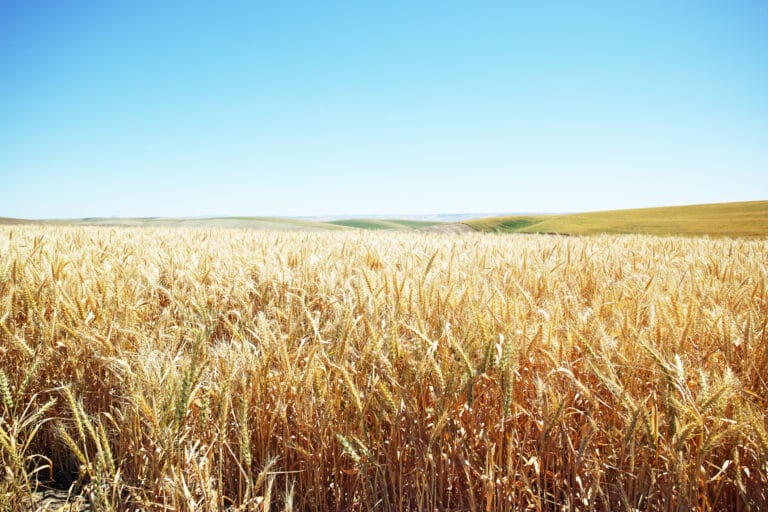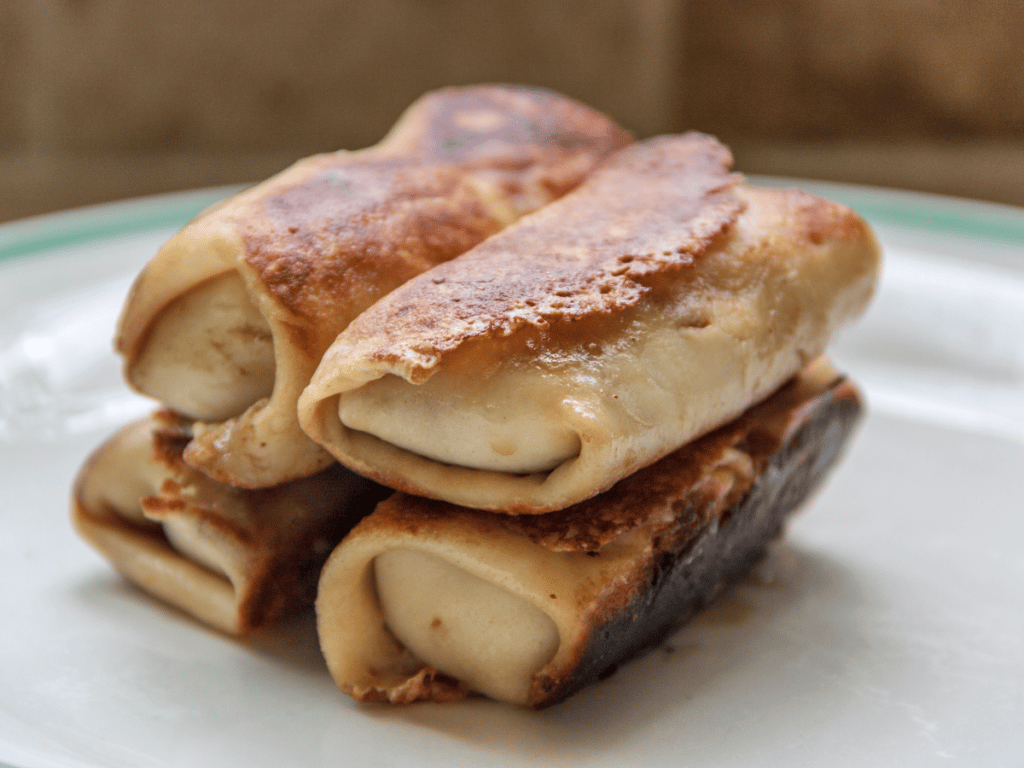
What is Shavuot?
Shavuot may not get as much attention as other Jewish holidays like Hanukkah, Passover and Purim, but it celebrates what is the most important event in all of Jewish history: receiving the Torah on Mount Sinai.
In an agricultural sense, Shavuot marks the beginning of the wheat harvest, and the time when the first fruits of the season were brought to the Temple as an offering. In a historical sense, it is the anniversary of the giving of the Torah on Mount Sinai, and the covenant the Jewish people made with God.
The day is traditionally celebrated by studying Torah all night (or late into the night), eating dairy products, attending synagogue, reading the Book of Ruth, and abstaining from work.
In Jerusalem, tens of thousands of Jews who have studied Torah the whole night walk to the Kotel (Western Wall) at the break of dawn to recite the morning (Shacharit) service.
There are many different essential messages of Shavuot (read a few of them below). It is a day of renewing our commitment to Torah and God, reaffirming our faithfulness and responsibility for each other, learning Torah and celebrating our identity as Jews.
Read more: Get our guides to all the Jewish holidays.
When is Shavuot 2024?
Shavuot begins on the 6th of the Hebrew month of Sivan, right after the end of the 49-day period of counting the Omer). In Israel, it is celebrated for one day, and outside of Israel, it is celebrated for two days.
Shavuot begins the evening of Tuesday, June 11, 2024, and goes until the evening of Thursday, June 13, 2024, in the Diaspora.
How is Shavuot celebrated?

On Shavuot, like on many Jewish holidays, we abstain from work, recite special prayers and have a festive meal. There are also a number of customs that are associated with the day:
- Eating dairy products — It is customary to eat dairy products on Shavuot. Traditional Shavuot foods include cheese, cheesecake, blintzes (a rolled pancake that is filled with cheese), and bourekas (pastries stuffed with cheese, mashed potatoes, spinach, mushrooms or other fillings), plus these diverse food traditions from around the world. There are a number of explanations of why we eat dairy products on this day (read about them below).
- Studying Torah all night or late into the night — It is customary to celebrate the anniversary of the giving of the Torah by studying Torah all night, a practice which is known as Tikkun Leil Shavuot. According to the midrash, on the morning that the Jewish people were supposed to receive the Torah — the most important event in Jewish history — they overslept and had to be woken up by thunder and lightning and the shofar blast from God (Shemot/Exodus 19:16). Tikkun means “correction” and Leil Shavuot means “the night of Shavuot.” To atone for having overslept, many Jews stay awake all night long, studying Torah. An additional, simpler explanation of this practice is that we study Torah to celebrate the anniversary of its giving.
- Reading the Book of Ruth — We read the Book of Ruth on the second day of Shavuot (in Israel, where Shavuot is celebrated for one day, it is read on the morning of Shavuot). The book is about a Moabite woman, Ruth, who follows her Israelite mother-in-law Naomi and joins the Jewish people. There are various explanations of why we read this story on Shavuot. Rabbi Isaac Klein explains, “Ruth’s coming to Israel took place around the time of Shavuot, and her acceptance of the Jewish faith was like [the acceptance of Torah] for the people of Israel.” Another explanation is that King David, who was Ruth’s descendant, died on Shavuot (Jerusalem Talmud, Chagigah 2:3)
- Flowers and plants — It is also customary to decorate the synagogue and one’s home with flowers, plants and greenery on Shavuot. This custom reflects the agricultural nature of the holiday. It is also connected to the midrash which says that Mount Sinai burst into flowers and greenery at the time the Torah was given.

Why do we eat dairy on Shavuot?
It is customary to eat dairy foods on the first day of Shavuot. One explanation of this tradition is that Shir HaShirim (Song of Songs) 4:11 states, “honey and milk shall be under your tongue,” which is understood to refer to the Torah. Or, it symbolizes the “land flowing with milk and honey” that was promised to the Israelites (Shemot/Exodus 3:8). (However, this does not explain why we do not eat honey.)
Another explanation is that after receiving the Torah, the Jewish people learned that the meat that they were eating was not Kosher, so they celebrated by eating dairy instead (Mishnah Berurah 494:12).
Yet another explanation, from a Kabbalistic (Jewish mystical) perspective, is that the gematria (numerical value) of the Hebrew word for milk, chalav, is 40, which is the number of days Moses spent on Mount Sinai receiving the Torah (Rabbi Yitzhak Lipietz, Sefer Matamim).

How to greet someone on Shavuot
To greet someone on Shavuot, you can say, “Happy Shavuot” or use one of the following:
- Chag sameach (Happy holiday)
- Chag Shavuot sameach (Happy Shavuot)
Is Shavuot in the Bible?
Yes. The Torah mentions the holiday by three different names, below. It is important to note that although Shavuot began as an agricultural holiday, it later became a day of celebrating the giving of the Torah on Mount Sinai.
- Chag HaShavuot (Festival of Weeks) — Shemot (Exodus) 34:22 states, “You shall observe Chag HaShavuot.” The name Shavuot, “Weeks,” refers to the 7-week period of counting the Omer between Passover and Shavuot. According to the Torah, it took approximately seven weeks for the Jewish people to travel from Egypt to Mount Sinai. Shavuot marks the culmination of this journey from liberation to revelation (i.e., receiving the Torah). In Temple times, the counting marked the seven weeks from the wheat harvest on Passover to the barley harvest on Shavuot.
- Chag HaKatzir (Festival of Reaping) — Other names of this holiday reflect its agricultural significance. In Shemot (Exodus) 23:16, the Torah calls it Chag HaKatzir (the Festival of Reaping), a reference to the period when the first crop of the season is ready for harvest.
- Yom HaBikkurim (Day of the First Fruits) — In Bamidbar (Numbers) 28:26, it is called Yom HaBikkurim (Day of the First Fruits), as it was the day when people would bring their first fruits of the season to the Temple as an offering.
In the Talmud (e.g., Mishnah Rosh Hashanah 1:2), the holiday is also called Atzeret, which comes from the Hebrew root “atzar,” meaning “stop.” Shavuot concludes (or “stops”) the 49-day period of the Omer, in the same way that the holiday of Shemini Atzeret concludes the 7-day festival of Sukkot.
Revelation: An ongoing process
Meanwhile, in Jewish liturgy, Shavuot is referred to as “Z’man Matan Torateinu,” “the time of the giving of our Torah.” In Martin Buber’s “Tales of the Hasidim,” there is a beautiful parable about this:
The rabbi of Kotzk was asked: “Why is Shavuot called ‘the time the Torah was given’ rather than the time we received the Torah?” He answered: “The giving took place on one day, but the receiving takes place at all times.”
Jewish tradition teaches that revelation, receiving Torah and encountering the divine was not a one-time event, but is always possible. Revelation at Sinai is outside of the realm of time and place and is ongoing for each of us. In his book, “The Man of Today and the Jewish Bible,” Buber conveyed this idea:
“Creation is the origin, redemption the goal. But revelation is not a fixed, dated point poised between the two. The revelation at Sinai is not this midpoint itself, but the perceiving of it, and such perception is possible at any time.”
The medieval French-Jewish philosopher, Rabbi Levi ben Gershon (Ralbag) agreed, writing, “Every generation must think that the Torah was given directly to them.”
Diversity of perspectives: What is the message of Shavuot?
Okay, so Shavuot celebrates the anniversary of the giving of the Torah, but what meaning does it have for all of us? As you prepare to celebrate Shavuot, here are a few reflections from rabbis and Jewish leaders on the most important message of this day.
Shavuot is about filling our lives with Torah, meaning and purpose.
Speaking on the Chutzpod! podcast, Rabba Yaffa Epstein underscored the connection between Passover and Shavuot.
“We go from freedom to revelation. One of the most important messages of Shavuot is that freedom is great and choice is great, but you have to fill your freedom with content and meaning,” she said.
“If you want to celebrate or think about what the holiday of Shavuot could mean for you, I would invite you to think about where are the places in your life that you’re free, and how do you want to fill that freedom with more depth, content, knowledge and deepen that experience?”
Shavuot is about our faithfulness and loyalty to one another.
In a video message in 2019, Rabbi Jonathan Sacks argued that the essence of the Book of Ruth, which we read on Shavuot, is the idea of love as hesed (loving kindness).
“It is that hesed that epitomizes the relationship of Israel and God that happened on Shavuot at Mount Sinai,” Rabbi Sacks said. In that extraordinary moment, God made a covenant with the Jewish people that was described by the Prophet Hosea as an “erusin” (betrothal). “That is faith as marriage, love as loyalty, and that is what Shavuot is all about,” he added.
An essential message of Shavuot is that “at the heart of faith is that faithfulness that binds us to one another in the love that is loyalty, and the loyalty that is love,” he concluded.
Shavuot is about Jewish unity for a higher purpose.
Writing in 2020, the Israeli Haredi journalist Sivan Rahav-Meir shared a thought about Shavuot that she attributed to Rabbi Shalom Rosner.
“We know how to unite against terror and during wars when we excel in solidarity. During the [Covid-19] crisis we also demonstrated mutual responsibility,” she wrote.
“There are many examples of an external enemy that served to elevate our feeling of unity…But our stature when we stood together at Mount Sinai heralded a revolution. It raised us up to a new level of unity,” she explained.
“We did not run away from anyone, but rather, came together in joy to receive our new identity. We did not crowd together close beside each other because of Pharaoh and the Egyptians, the Nazis, the antisemites or any other threat, but instead we chose to be together and to receive the Ten Commandments.”
“We were not defined by a negative experience but by a positive one…On the festival of Shavuot it’s possible to elevate to the highest level — unification around our joyful common story.”
Shavuot is about renewing our commitment to Torah and God.
Rabbi David Wolpe wrote that Shavuot is “when we became who we are” by accepting the Torah and the responsibilities it demanded of us. Our tradition has described this as a “marriage” between God and the Israelites.
“The rabbis tell us that the Torah is the ketubah between God and the Jewish people,” he wrote. “A ketubah is sometimes called a wedding contract, but it is better called a covenant. It enshrines sacred obligations. Jews are a covenantal people; we are bound to one another and to God by the idea of everlasting, mutual obligation. Sinai was the chuppah, and Shavuot is our anniversary.”
Similarly, Rabbi Yitz Greenberg wrote, “This day marks not just a revelation of a set of observances, but how a whole people took on a commitment to be a covenant people (‘light unto nations’) and an avant-garde for tikkun olam (repairing the world) for the whole world.”
What did the Jewish people hear on Mount Sinai?
Shemot (Exodus) 19:16 – 20:18 describes the giving of the Torah on Mount Sinai. Rabbis throughout Jewish history have debated the question of what exactly was given on Mount Sinai, and what the Jewish people heard.
Rabbis have offered a full range of answers to the question. Some say they heard the 10 commandments (as the verses explicitly state), others say they heard all 613 commandments or the entire Torah, and still others say they heard only the first two commandments, only the first word of the commandments (“anochi”), or only the first letter of the first word (the barely audible sound of the Hebrew letter “aleph”).
A well-known midrash (Shemot Rabbah 5:9) offers a different perspective, based on the verse, “And all the people witnessed the thunderings” (Shemot/Exodus 20:15):
Since there was only one voice, why does the verse say “thunder” in the plural? Rabbi Yochanan said: Because God’s voice divided into 70 voices, into 70 languages, so that all the nations might hear it…
Come and see how the voice went forth to all of Israel, to each and every one in keeping with his particular capacity — to the elderly in keeping with their capacity, to young men in keeping with their capacity, to the little ones in keeping with their capacity, to the suckling babes in keeping with their capacity, to the women in keeping with their capacity, and even to Moses according to his capacity, as it is written, “Moses spoke and God answered him with a voice,” (Ex. 19:19) — with a voice that he could stand.
Thus it says in Tehillim (Psalms) 29:4, “The voice of God in strength,” — “In its strength” is not written, rather, “in strength,” in the strength of each and every one…It would speak to each and every one according to his or her strength.
According to this midrash, although the people of Israel were all standing at Sinai at the moment of matan Torah (the giving of the Torah), they each heard different things. Rabbi Lawrence Kushner interpreted this idea this way: “People are able to hear only what they are ready to hear. God speaks to each of us in a personal way, taking into consideration our strength, wisdom, and preparation.”
Shavuot Torah readings:
Day 1:
- Shemot (Exodus) 19:1–20:23 (the giving of the Torah on Mount Sinai)
- Bamidbar (Numbers) 28:26-31 (tells of the festival of Shavuot)
- Ezekiel 1:1-28 (contains the prophet Ezekiel’s vision of God)
Day 2:
- Devarim (Deuteronomy) 14:22 – 16:17 (laws of the three pilgrimage festivals including Shavuot)
- Bamidbar (Numbers) 28:26-31 (tells of the festival of Shavuot)
- Habakkuk 2:20-3:19 (contains the prophet’s vision of God)
- Megillat Ruth (The Book of Ruth)
Originally Published May 19, 2023 04:44PM EDT
